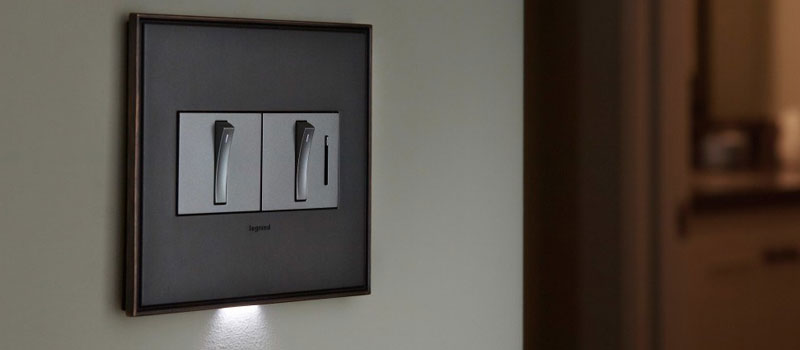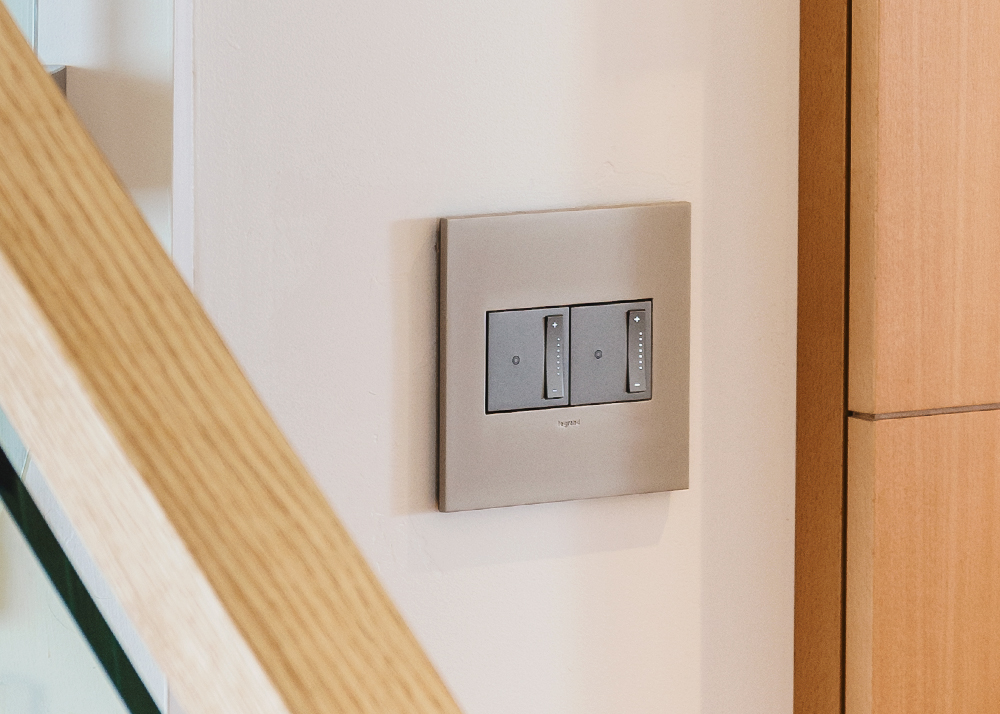A Guiding Light to Dimmer Switches
A dimmer is a type of lighting control that lets you adjust the overall brightness of one or more light fixtures. Dimmers work by changing the amount of electricity that flows through the circuit. Less power produces less light. You can use dimmer switches to alter the mood of a room, lower the lights when watching a movie or dim the bathroom lights first thing in the morning. Using a dimmer may also save you money on your energy bill.
What are the Different Types of Dimmers?
When choosing switches to implement your dimmer ideas, the first thing you should consider is the number of controls that affect your light fixture. Different circuit layouts require different types of switches.
- Use a single-pole dimmer if there are no other switches or dimmers involved. These controls are a good choice for individual overhead fixtures in bedrooms or bathrooms.
- Choose a 3- or 4-way dimmer if there are one or more additional light switches in the circuit. Areas such as stairways, living rooms, and hallways often use multiple switches to provide lighting controls near each entrance.
- Install multi-location dimmer switches when you need to adjust room brightness from several locations. They’re ideal for large rooms with multiple entrances.
- Use a plug-in dimmer switch to control an individual table or floor lamp. These products plug into a power outlet, have a pass-through plug and adjust the brightness of the attached light fixture.
Always check the total wattage of the light bulbs in your dimmable fixtures. If it exceeds 600 watts, you should use a dimmer with a high wattage rating.
Illuminating Line and Low Voltage Lighting
Most household light fixtures use either line or low voltage power. Line voltage fixtures connect directly to your home’s electrical system and use 120-volt power. Low voltage lights connect to a transformer that converts household current to a lower voltage, typically 12 volts. Most low voltage light systems require magnetic or electronic low voltage dimmers.
Pro Tip: If you’re not sure what type of dimmer switch you need, consult a professional electrician.

Take Control of Your Lighting
All dimmer switches perform the same task of adjusting the brightness level of one or more light fixtures, but they offer many different control methods. Rotary and slider switches provide smooth illumination adjustments with a twist or push, but you do need to set the brightness each time you turn on the light. This type of dimmer usually has an integrated on-off switch. Toggle and rocker dimmers combine a traditional light switch with a separate dial or slider control. They may be the best dimmer option for rooms where you adjust the light levels infrequently. You can set the slider and use the switch to turn the lights on and off without affecting the chosen illumination level.
Tap dimmer switches provide stepped control over brightness. Tapping the switch or touch pad increases or decreases the light level by a fixed amount. Some of these products also have separate on-off switches. If you have more complex lighting needs, consider a scene selector dimmer. These products give you one-touch access to multiple light level settings.
Additional Dimmer Options
Some dimmers have wireless remotes you can use to change illumination levels from anywhere in the room. Use one of these versatile controls to dim the house lights when watching movies in the family room or to adjust the bedroom lights without getting out of bed. Dimming sensors have built-in motion detectors and automatically dim or turn off the lights in unoccupied rooms.
Choosing Dimmable Bulbs
Using a dimmable lighting system imposes a few limits on light bulb selection. Most incandescent and halogen bulbs work with dimmers. However, if you prefer energy-saving LED or compact fluorescent (CFL) bulbs, be sure to choose dimmable bulbs and use them with a universal dimmer switch. Traditional incandescent/halogen dimmers are not compatible with these low-wattage bulbs. Matching dimmable bulbs with CFL and LED light dimmers ensures flicker-free operation and smooth changes in illumination levels. Lights that use tube-style fluorescent bulbs also have special dimming requirements. Choose rapid start bulbs and install dimming ballasts in these fixtures.
Dimmer switches enhance the versatility of your home’s lighting and let you set the mood in any room. They offer precise control of illumination levels and can be used by themselves or as part of a more complex lighting system. Use your new knowledge of dimmer switches and add these flexible controls to your next lighting project.


2 Comments
My home has multiple individual lights with switches on a single circuit. I understand that each circuit should only have one dimmer. How do I set it up so I can dim individual lights without affecting others?
Hi Heather. If you want to dim some lights on a circuit independent of other lights on the same circuit, the simplest solution is to install smart light bulbs and dim/control them through the manufacturer’s app.